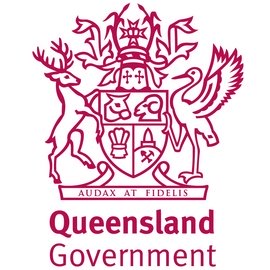Dr Mihajla Gavin, senior lecturer at University of Technology Sydney, has cast a critical eye over the ways in which technology – including emerging AI tools – are reshaping the nature of teachers’ work in schools.
She says in the case of AI, myths abound about its ability to make teachers’ lives easier.
“[These are] around how it might help make teachers’ work more efficient, in terms of being able to standardise or automate things, or create lesson templates, or being able to draft emails.”
But in reality, this rhetoric amounts to a ‘double-edged sword’, Gavin warns.
“It’s [paradoxical], just having something ‘extra’ does not necessarily make things better or easier.
“It’s also looking at what potentially might some of those knock-on effects be. That definitely would be an area for further attention that researchers do need to be considering.”
To date, policy responses seeking to lessen the workload burden on teachers have not really hit the mark, the researcher indicates.
In an investigation into the NSW Government’s initiative to provide centralised online curriculum resources and lesson plans to help time-poor teachers, Gavin and her research colleagues found the initiative failed to attack the root of the workload crisis.
“These additional resources were framed as ‘saving teachers time’, with quotes going around of ‘let’s not reinvent the wheel, let’s provide a base and then teachers can tweak things here and there if they need to’.
“But one of the things [we’ve] been trying to emphasise through our research, is that actually framing teachers’ work in that way doesn’t really solve this workload problem that we have at the moment.”
In short, the initiative actually took teachers away from their core work, Gavin says.
“It very much undermines the complexity required in designing lessons and effectively tailoring them and contextualising them to the learning experience of students within classrooms.”
The point is that teachers want more time to be working on designing lesson plans and to be collaborating with other teachers as well, she says.

“One of the key things that's often missing within the conversation of teachers’ work is literally the voice of teachers," Gavin says.
It’s a point echoed by one secondary teacher in Melbourne, who spoke to EducationHQ on the condition of anonymity.
The teacher said that in the case of AI tools, teachers have been able to ‘save time’ when marking and writing their own samples, but said in a way it had ‘stifled creativity’ and taken over her ‘real work’.
“We’re using AI to reduce our actual work so we can do the admin, which arguably should not be our job,” the public school teacher said.
One broader problem is that all too often policymakers announce initiatives designed to help teachers that are grounded in their own perspectives about what the workforce needs, Gavin adds.
“One of the key things that’s often missing within the conversation of teachers’ work is literally the voice of teachers, which might sound a little bit ironic,” she says.
“…often there is a lack of consultation, a lack of teacher voice within the design of those policies.”
Monash University’s Professor Neil Selwyn has previously called for educators and the public at large to speak up about what kinds of technologies they want to see in schools, rather than blindly accept them as a ‘done deal’.
“…at the moment … the conversation is dominated by people that want technology to be used in schools, by tech companies or technology enthusiasts,” he said in an interview.
“They have a vested interest in technologies being used. We need to get all the other people, the silent majority that don’t really care, to actually have their say as well, make it more of a democratic process.”
During the COVID pandemic we saw the rise of teachers’ digital connectivity too, Gavin points out, effectively blurring the lines between work and home. This has significantly intensified workloads across the board, she indicates.
“Technology [has become that] facilitator or enabler for a worker to effectively always ‘be on’, always be available, always be on call.”
She notes the big conversation surrounding the ‘right to disconnect’ laws which recently came into effect ,“recognising that’s a huge problem that’s also contributing to workload and to stress and to burnout”.
For the Melbourne teacher, this scene rings true.
“Technologies designed to make teachers' work easier have meant that we now have extra ways to communicate data and report home to families.
“Now we’re using multiple platforms to communicate progress home to parents and it's put extra strain on us to meet that instant demand for a reply,” Gavin reflects.
She says we can’t make assumptions that throwing more resources at the profession is going to alleviate workload pressures.
“I don’t think it’s a case of just adding more will fix something.
“It’s looking quite carefully, and then quite critically at the complexity of the nature of that work, and … really making sure that the design of those policies are very much being informed by teachers on the ground within schools.”















